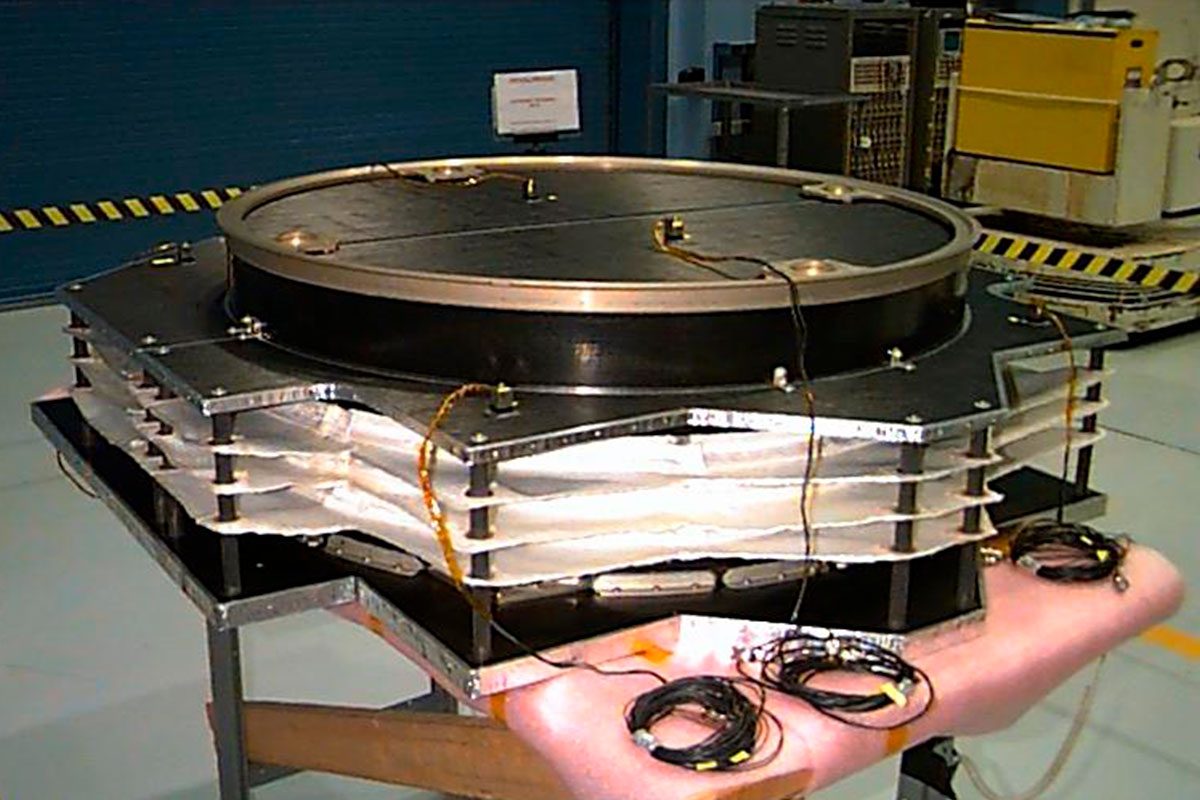One of the biggest problems facing the development of probe Giotto, launched on 02-jul-1985 by ESA, was how to build a dust shield. It is estimated that when the spacecraft would be heading towards Halley, the combined velocity of the two bodies (Giotto x dust grains) would be about 245,000 km/h. At this speed, a grain of dust with 0.1 gram would impact the ship hard enough to penetrate 8 centimeters on a solid aluminum plate. With such a thick shield, the ship’s weight would be too much, and scientists sought another alternative.
The solution adopted was a concept devised in 1947 by astronomer Fred Whipple [1906-2004]: the shield consisted of two protective sheets, 23 centimeters apart. The sheet that received the first impact of the dust grains was 1 millimeter thick aluminum and vaporized the smaller particles. Larger particles that exceeded the first sheet impacted less strongly on the second sheet, which was 12 mm thick and made with kevlar (synthetic material used for example in bulletproof vests). The two sheets would be sufficient to support particles up to 1 gram in mass, 50 times faster than a bullet (about 1,700 km/h).
Referências
http://www.daviddarling.info/encyclopedia/W/Whipple_shield.html
https://swfound.org/media/50876/jiang_debrisshielding.pdf

